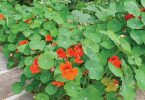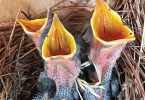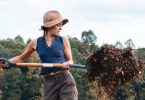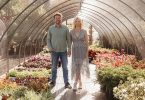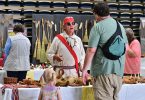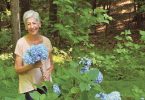By Linda & Hal Mahan
Springtime abounds with awakenings. The forest floor is carpeted with wildflowers. “Spring ephemerals” such as trilliums take advantage of sunlight beaming down through leafless trees, completing their flowering and fruiting before the forest canopy leafs out.
Listen at dusk on a warm spring night and you will hear the voices of frogs and toads. During the winter, these amphibians have been hiding under leaf litter and in wet soil to escape freezing temperatures. As temperatures warm, they become active and begin the process of finding mates and laying eggs. Since amphibians begin their life cycle in water, a single pond or stream may attract several species at once. Their vocalizations may help the individuals locate their own species.
How is this amazingly loud sound produced by such a small animal? Generally, frogs possess an inflatable vocal pouch, or pair of pouches, below their mouth. Air is drawn in through their nostrils to inflate the lungs and vocal pouch. The nostrils are then closed and the air is forced back and forth between the lungs and the pouch, passing through a voice box and creating a very LOUD and identifiable sound!
Listen carefully and you’ll begin to distinguish between various species of frogs and toads. One of the first to be heard in the early spring is the Spring Peeper, a tiny 1.5-inch long frog with a distinctive “X” on its back. Its call is a regular, high-pitched peeep, repeated about once a second. For such a small frog, a chorus of them can be quite deafening.
The best way to learn frog and toad calls is to discover them at night using a flashlight so that their appearance and voice can be fixed in your mind. It can be a fun adventure on a warm spring evening.
Recommended Resources:
The Frogs and Toads of North Carolina: Field Guide and Recorded Calls, by Dorcas, Price, Beane, and Owen. A handy field guide with audio CD.
Frogs & Toads of the Southeast, by Mike Dorcas and Whit Gibbons. A comprehensive resource book with color photographs, range maps, and charts showing calling season.
Laura and Hal Mahan are owners of The Compleat Naturalist, located at 2 Brook Street in the Historic Biltmore Village. Learn more about the world of frogs, toads, and other amphibians at a special multimedia program from 6:30–8:30 p.m. on Friday, March 18, at The Compleat Naturalist, presented by naturalist/photographer Sharon Mammoser. For information on how to register, visit compleatnaturalist.com or call 828.274.5430.

